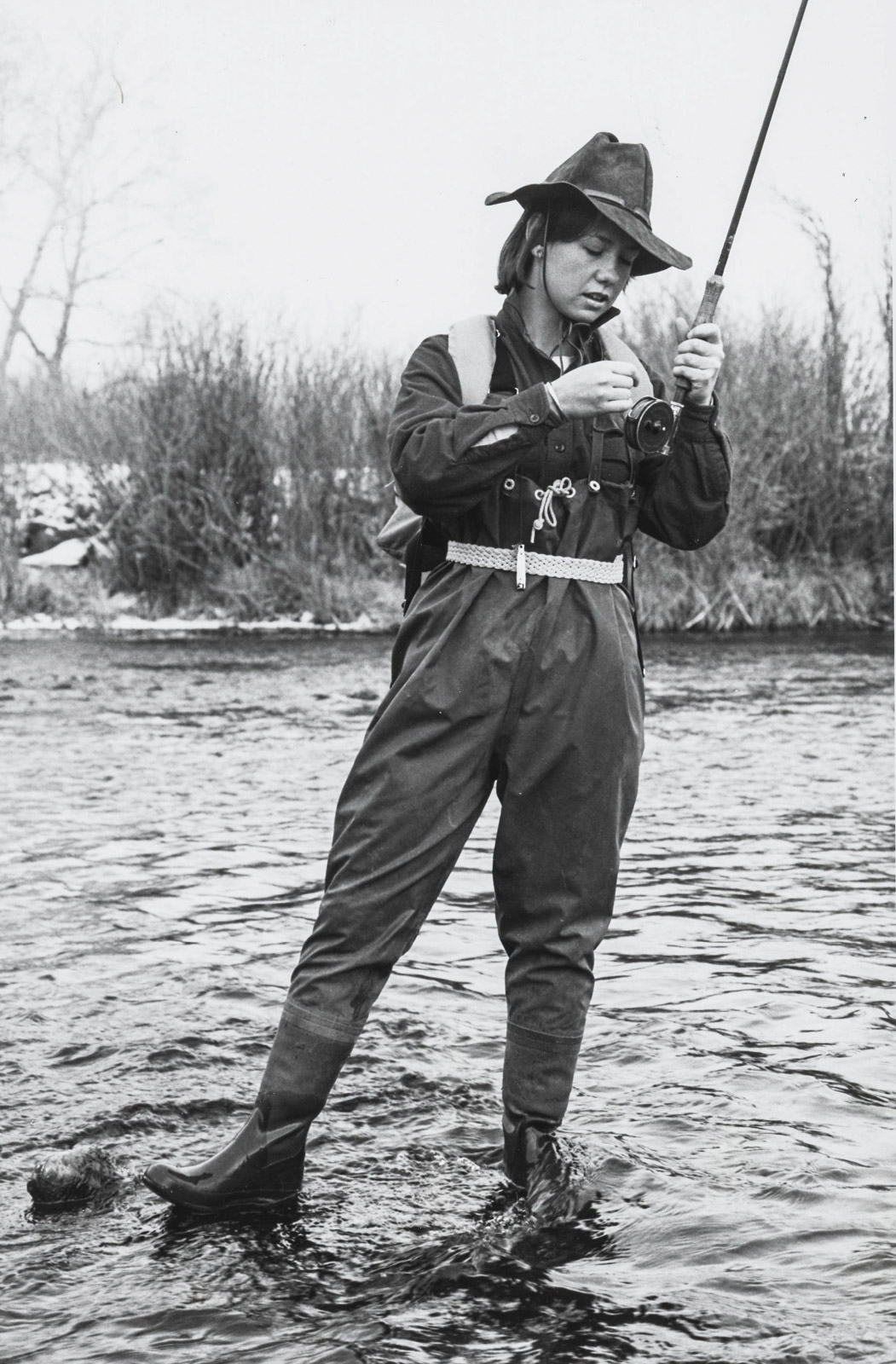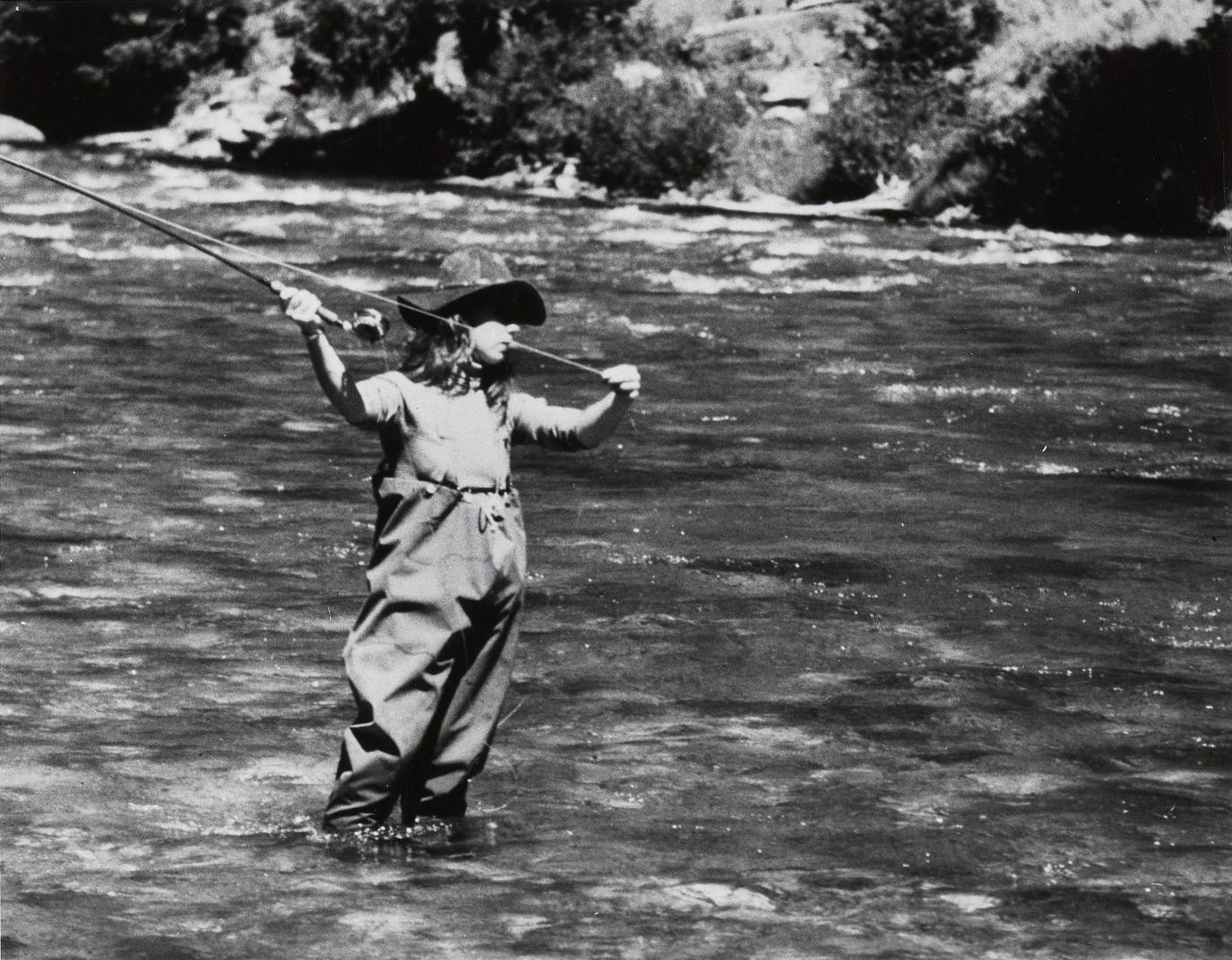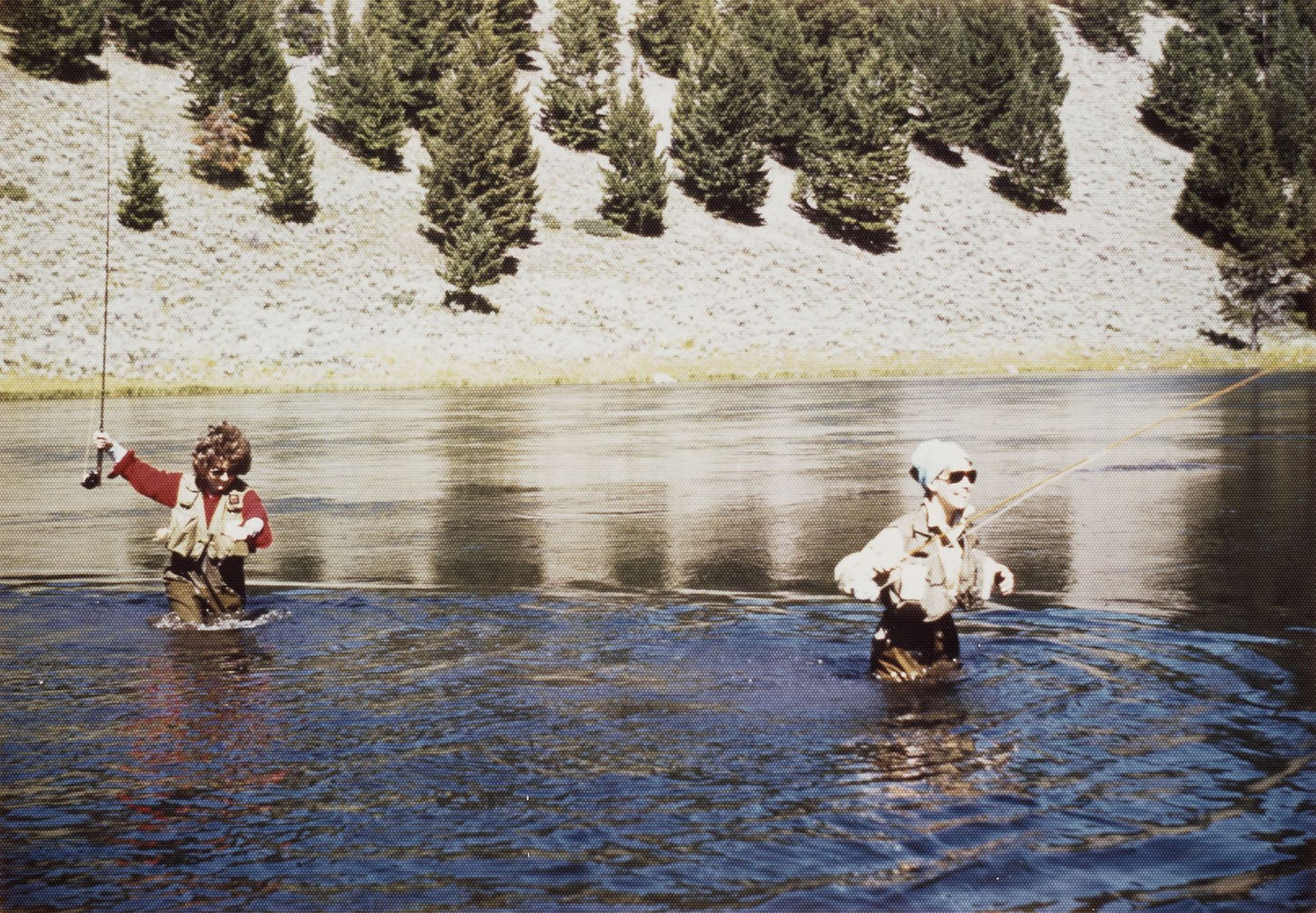Lady of the Line

by Dave Hemphill
It all started in 1952, when Bud Lilly, Montana’s father of fly fishing and often referred to as “a trout’s best friend,” bought his fishing shop in West Yellowstone. Two years later, his wife Pat delivered their daughter Annette. Born in the tiny town of Deer Lodge, Annette carried within her the genes of a fly-fishing legend and would one day become an angling icon in her own right.
Annette currently lives in California, but if you ask where she’s from, she’ll say Bozeman and West Yellowstone. As a child, Annette spent most of her time in Bozeman, but every summer she’d return to West Yellowstone and work in her dad’s shop.
The trout shop that bore her father’s name was a foundational piece of West Yellowstone’s community. It housed a basement gallery for local artists, and for anybody who entered the shop, there was always hot coffee available—in the restroom. “The bathroom might have been the busiest part of the shop,” Annette says, laughing, “because that’s where we brewed and kept our coffee pot.”
It was a family-run store that required all hands on deck during the busy summer season. Along with herself and her two older brothers, the shop’s staff included their friends. “It was all about fishing, all the time,” Annette remembers. “We worked together, fished together, and hung out together. And when we weren’t fishing, we were talking about fishing. Who caught what. Where the fish were biting. What flies were working and which ones weren’t. We talked about where we had fished that day, and where we might go fishing tomorrow.”

It was rare when the whole family could fish together. When certain members were out on the river, others needed to stay behind and man the shop. Annette said that it was always on her father’s birthday when they were able to enjoy a group outing. They’d set up along the banks of the Gallatin to fish and have a picnic. Her mother grilled steaks over a campfire, and as Annette explains, “It was a tradition, and a special time. I have really good memories of my dad’s birthdays.”
Annette can’t pinpoint when she actually learned to fly fish. “It’s something I just always remember knowing how to do,” she says. “I never had any formal training. My brother Greg and I think we learned by osmosis.” But it’s her brother Mike who she called her first “fishing buddy.” She recalls them riding bikes to the south fork of the Madison—until Mike hit a certain age. “When I was growing up, you could get your driver’s license in Montana when you were 14 or 15,” she explains. “When Mike got his license, it opened up so much for us. We’d drive somewhere, and then hike up. We started going up to Fan Creek, or to the headwaters of the Gallatin.”
As a teenager, Annette was an anomaly in the world of fly fishing. “Back then, it was the mid-’60s, and there were no females fly fishing,” she says. “So I fished with my brother a lot, and some of his guy friends. But you never saw any girls out fishing the rivers.” That’s something Annette would soon remedy.
At the family shop, Annette described how clients and customers would come in and ask her dad for advice on fishing. “My dad would just point to me and tell those guys, ‘Go ask my daughter. She can help you.’ You’d see the look of surprise on the guys’ faces when they were told to go ask a girl, but to my dad it wasn’t weird at all. I was knowledgeable and knew what I was talking about. In his eyes, I was a valuable resource.”
Summer after summer, familiar customers returned to the shop—locals and out-of-towners alike. The Lillys started to notice that the fishermen’s wives were curious about fly fishing, but were too intimidated to go out with a bunch of men. That’s when the idea was hatched for Annette to teach women.
In 1973, as a teenager, Annette started one of the first all-female fishing classes in the U.S. called, “For Ladies Only.” She remembers it well: “I was 19, and I didn’t know what I was doing initially. I was never formally taught how to fly fish, so I didn’t have a model. Translating what I knew about fly fishing to complete novices was daunting.”
“What I quickly realized,” she adds, “was that the things I took for granted, the parts of fishing that were second-nature to me, were things that the women I was teaching just didn’t know. They didn’t realize that fish hold in one spot, and that they face with their heads upstream. They didn’t know that fish don’t live everywhere in the water, that they don’t travel around—that fish tend to school and stay in one area. To me, those things were a given, but to my students, they were foreign. Ladies were asking me questions about knowledge that I thought everybody had. It was eye-opening, and realizing how basic I had to start out was a challenge.”

But Annette not only embraced the challenge, she mastered the process. Her classes became a hit, and as the first licensed female fishing guide in the state of Montana, she helped scores of ladies learn to fly fish. No longer was it an activity for men only.
Eventually, college called, and Annette shifted her focus away from guiding. But that wouldn’t last. She does, after all, have the Lilly chromosomes. She moved to California, and in 1993, started another female fly-fishing class, this time called the “Woman Angler.” Once again, the rivers west of the Mississippi harbored students from the Annette Lilly Russ school of fly fishing.
Today, Annette is retired and living with her husband. The girl from Montana has put lines in the water all over the world, and although it’s the rivers of California where she now spends most of her time, she says that when she returns to Montana, it feels like coming home: “There’s no place I’d rather fish than in Montana.”
